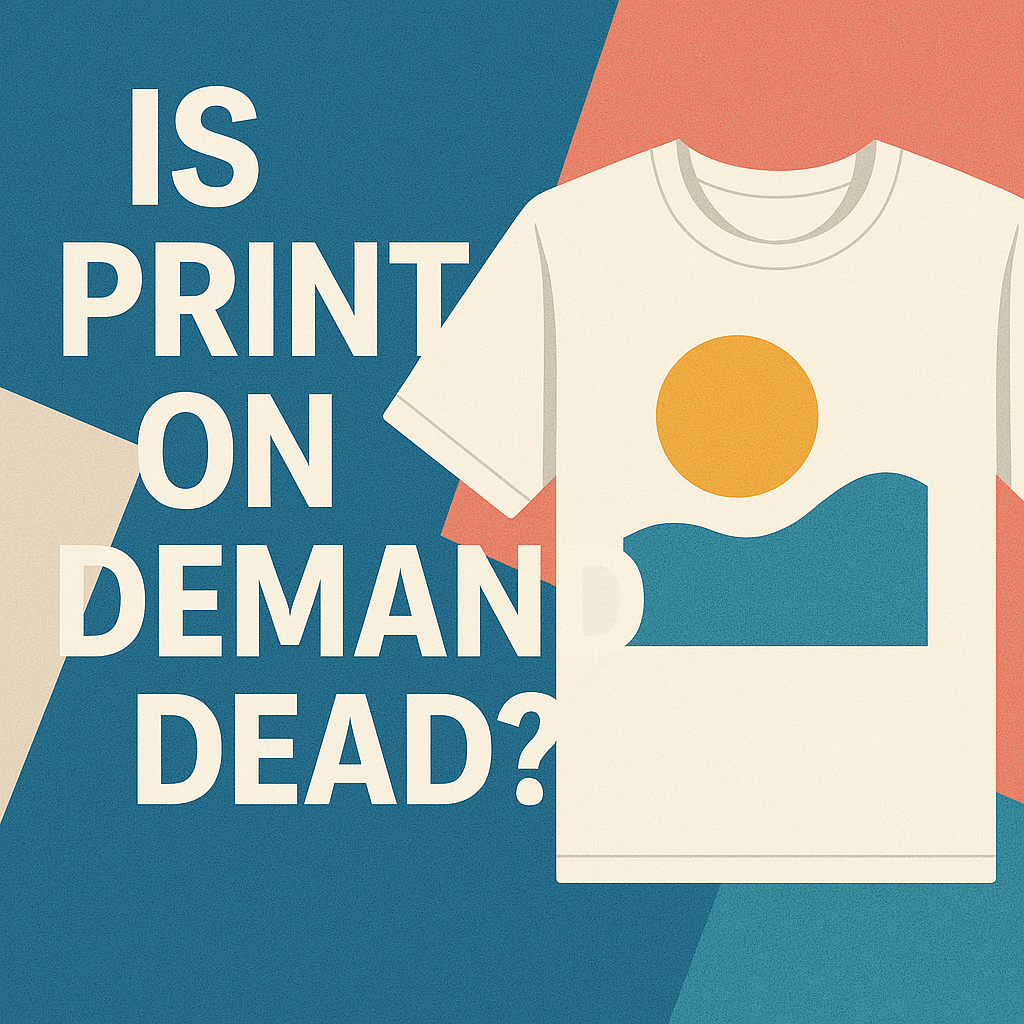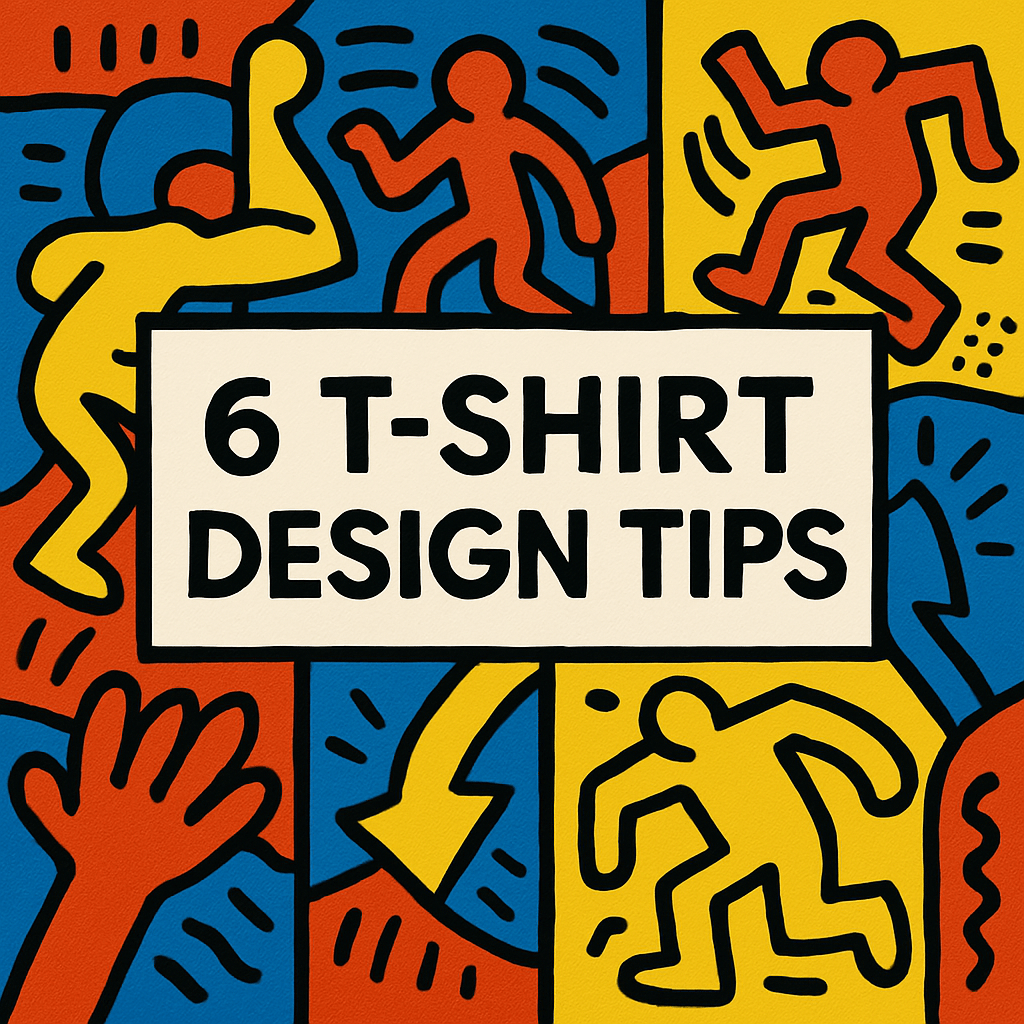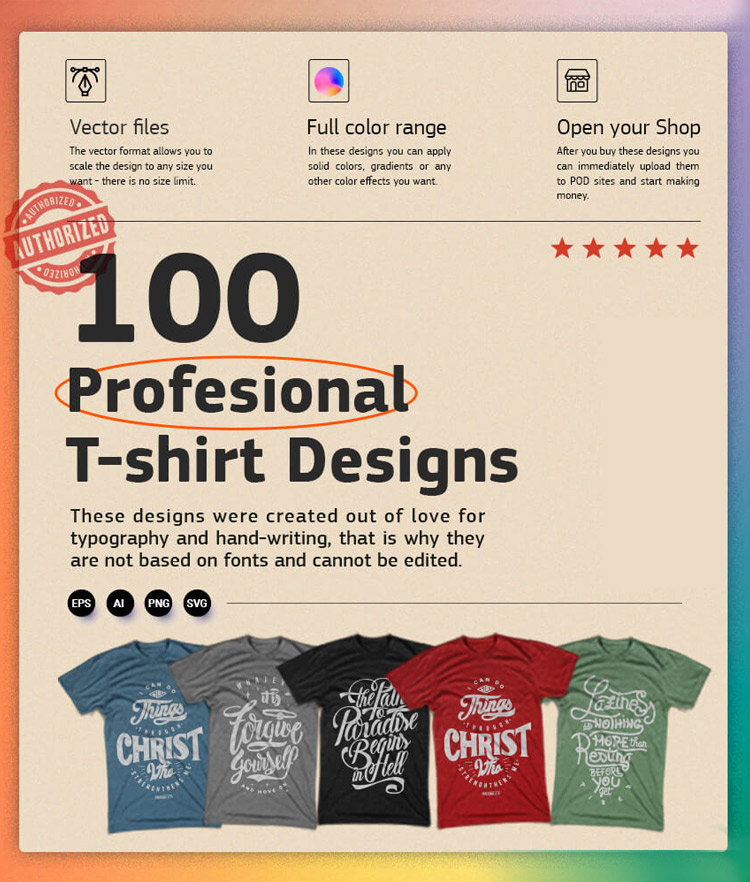
Is Print on Demand Dead? Why It’s Actually Just Getting Started
Every few months, someone rings the alarm bell, declaring that Print on Demand (POD) is “dead.” Scroll through YouTube or ecommerce forums, and you’ll find frustrated sellers waving the white flag, declaring the end of the POD gold rush. From disappointed comments to dramatic headlines, it often seems like the era of easy money in POD is over.But here’s the truth that doesn’t get nearly as much attention:Print on Demand isn’t dead—it’s evolving, maturing, and for those who are willing to learn, adapt, and innovate, it’s sky-rocketing.In fact, what we’re witnessing is not a collapse but a transformation. As with any maturing industry, the early, chaotic growth phase has given way to a more competitive but also more sustainable model. The barriers to entry are slightly higher, but the potential for meaningful success is greater than ever. Instead of racing to flood marketplaces with generic designs, successful POD sellers are now building brands, cultivating communities, and using data to drive decisions.The narrative that POD is “dead” often comes from those who were banking on shortcuts, trend-hopping, or outdated methods. It’s not that the opportunity has vanished—it’s that the rules have changed. The sellers who thrive today are those who treat POD like a serious business, not a get-rich-quick scheme.So while it may no longer be the wild west of ecommerce, POD is far from gone. In fact, it’s just getting started.Why So Many Believe Print on Demand Is Dying
There’s a reason the idea of POD’s demise keeps coming back. A few key trends feed into the perception, and many of them stem from how the industry was initially presented to aspiring entrepreneurs. During the height of the ecommerce boom, especially at the start of the pandemic, Print on Demand was marketed as a low-risk, high-reward venture. Influencers and gurus showcased quick wins, showing screenshots of massive payouts from t-shirt sales and simplified strategies that made success look effortless.But reality soon set in, and these exaggerated expectations led to widespread disillusionment:- Oversaturation of generic designs: The market is flooded with clipart t-shirts and uninspired slogans. Sellers using outdated or cookie-cutter strategies are seeing fewer results. Many designs lack originality and emotional resonance, making it harder to stand out in crowded marketplaces. Platforms like Etsy and Redbubble are filled with similar graphics and text combinations, leading to buyer fatigue and diminishing returns.
- Unrealistic expectations: A lot of people jumped into POD during the pandemic hoping for quick, passive income with little upfront work. The idea that you could slap a phrase on a t-shirt and become a millionaire overnight was compelling but misleading. When instant success didn’t come, many labeled the entire model as broken or outdated. What they missed is that sustainable success takes time, strategy, and brand development.
- High competition on big platforms: With millions of designs on marketplaces like Amazon, Etsy, and Redbubble, newcomers often struggle to get visibility. Algorithms now reward strong branding, high-quality images, and frequent sales—elements that take time, strategy, and consistency to develop. This makes it harder for those without a marketing plan or differentiation strategy to gain traction.
The Stats Tell a Different Story
Let’s talk facts, not feelings. The Print on Demand industry is growing—and fast.- The global custom t-shirt printing market is projected to reach $14.81 billion by 2027, growing at a CAGR of 9.6% from 2021 to 2027 (Allied Market Research). This remarkable growth reflects the increasing consumer appetite for personalized products and the ease with which entrepreneurs can enter the market thanks to modern POD platforms. As more consumers seek unique apparel that reflects their personal identity, the demand for custom-printed clothing continues to surge.
- Etsy’s 2023 annual revenue hit $2.75 billion, and POD shops remain a top category on the platform. In fact, many of Etsy’s best-selling stores use Print on Demand as a backbone, creating scalable and flexible inventory systems that appeal to both sellers and buyers. The platform’s search engine algorithm increasingly favors consistent sellers with original, well-branded designs—many of whom are thriving POD entrepreneurs.
- Printify, one of the largest POD platforms, reported over 500,000 merchants using their service by the end of 2023. This figure illustrates a thriving ecosystem where service providers, designers, and sellers collaborate to meet an ever-growing global demand. It also signals the diversification of POD into more than just apparel—think home goods, accessories, pet products, and more.
- Shopify stores using POD models grew substantially during and after the pandemic—and that growth is still compounding with influencers, niche brands, and creators launching their own merch. Print on Demand has become the go-to fulfillment model for creators who want to test product ideas, monetize content, or build branded ecommerce empires without managing inventory or warehouses. The ability to integrate seamlessly with platforms like TikTok Shop and Instagram has only amplified this growth.
The Big Brands Are Loud, But They’re Not Alone
Yes, major players dominate headlines:- MrBeast’s Feastables merch flying off shelves.
- Influencers raking in 6–7 figures with fan apparel.
- Giants like Nike, Adidas, and Disney using hybrid POD models to test new product lines and launch exclusive capsule collections.
- A mom designing spiritual-themed baby onesies from her home office while building a loyal Instagram following.
- A Gen-Z artist selling cottagecore hoodies and mushroom-themed mugs through TikTok videos that go viral within her community.
- A firefighter couple making lifestyle merch for first responders, expanding into fundraising campaigns and community-based initiatives.
What It Takes to Win in Today’s POD Landscape
Success in POD today comes down to a few critical factors—factors that are no longer just suggestions but essential pillars for achieving long-term viability in a competitive market. As the industry matures, the skill set required to succeed has expanded from basic design uploads to full-scale brand development, community building, and digital marketing. Whether you’re an independent artist, a social media influencer, or a first-time entrepreneur, understanding and applying these foundational principles is crucial not just to survive—but to thrive—in the modern Print on Demand landscape:1. Niche Domination Over Trend Chasing
General slogans won’t cut it anymore. Niching down—hard—is essential. In today’s market, broad and vague messaging simply doesn’t capture attention or build customer loyalty. Instead, brands that thrive are the ones that speak directly to a specific group of people with shared interests, identities, and lifestyles. Think: “Cat moms who also love yoga,” not just “cat lovers.”By narrowing your focus, you can create a more resonant and emotionally engaging brand. It allows for targeted messaging, curated product lines, and a sense of community that general appeal brands can’t match. The deeper you dive into a niche, the more opportunities you have to understand your audience’s desires, language, humor, and values. That connection is what turns casual browsers into repeat buyers and loyal fans.2. Brand Identity Matters
People buy from brands they feel connected to. That emotional bond influences purchasing decisions far more than logic or price alone. In today’s crowded ecommerce landscape, that connection is what sets a successful POD brand apart from a sea of generic alternatives. From logo and messaging to packaging and customer experience, every detail contributes to how customers perceive your brand’s identity and values. Build a real brand—not just a print catalog—by ensuring consistency across all touchpoints, creating a unique voice, and delivering an experience that makes people feel seen, heard, and valued. When your brand stands for something meaningful, customers will stick around—not just for the products, but for the community and message behind them.3. Quality Designs and Differentiation
Gone are the days of Canva templates and word-only t-shirts. The market has matured, and customer expectations have grown accordingly. Today’s consumers want more than just clever sayings on basic tees—they’re looking for products that reflect their personalities, passions, and identities. Successful sellers now work with designers or become pros themselves, mastering design tools like Adobe Illustrator or Procreate to craft unique, memorable artwork.They offer custom illustrations that speak to their niche audiences, build cohesive design themes across collections, and inject creativity into everything from typography to garment layout. These sellers understand that aesthetics drive emotional engagement—and emotional engagement leads to brand loyalty. The most effective POD designs aren’t just visually appealing; they evoke a feeling, tell a story, or spark a conversation. In this new landscape, originality and intentional design are critical components of long-term success.4. Marketing = Everything
You can’t rely on Etsy’s algorithm or Amazon SEO alone. Organic discovery on these platforms has become increasingly competitive and algorithm-driven, making it harder for new sellers to gain traction without additional outreach strategies. To stand out, you need to meet your audience where they are actively consuming content and engaging with brands.Leverage TikTok trends by creating short, catchy videos that highlight your product benefits or behind-the-scenes production. Use Instagram Reels to show your brand personality, launch new designs, and engage directly with your followers. YouTube Shorts allow you to build longer-term brand awareness through creative storytelling and tutorials. Pinterest remains a goldmine for evergreen traffic—create pins that link back to your shop or blog and incorporate SEO-rich descriptions. Lastly, don’t underestimate the power of email marketing to build a loyal audience. By capturing emails from your customers and fans, you can promote new drops, share exclusive offers, and maintain direct control over your traffic without relying solely on third-party platforms.5. Data-Driven Iteration
Top POD brands test relentlessly. Launch dozens of designs, track conversion rates, gather customer feedback, and iterate based on real data. They understand that guessing rarely leads to sustainable growth, so they approach product development and marketing like scientists running controlled experiments. A/B testing different thumbnails, headlines, and ad creatives has become common practice.These brands don’t fall in love with any single product—they fall in love with the process. When a design doesn’t sell, they analyze the performance, tweak it, or replace it entirely. Over time, this mindset helps refine their catalogs to include only high-performing, brand-aligned products. The winners treat POD like a real business—not a side hustle experiment—and their results reflect that commitment to learning, testing, and scaling intelligently.Final Thoughts: Print on Demand Is Not Dead. It’s Just Growing Up.
The Print on Demand industry is not only alive—it’s thriving. But the low-hanging fruit is gone. The passive income dreamers have left the building. What’s left is a marketplace full of opportunity for creatives, hustlers, and entrepreneurs who are ready to treat POD like the real business it is. What used to be a convenient side hustle has transformed into a serious, scalable business model. Those who enter the space today with a strategic mindset have the potential to build lasting brands that grow beyond just t-shirt sales.Today’s Print on Demand sellers are launching entire collections across multiple product lines, leveraging automation, email funnels, influencer partnerships, and global fulfillment networks. The game has changed dramatically, and those who understand its new rules are thriving. Whether you’re tapping into niche audiences, building a loyal following through storytelling, or driving direct traffic via social media, POD allows you to create a business tailored to your strengths and passions.Whether you’re an artist, an influencer, or a stay-at-home parent with a creative spark, POD is still one of the most accessible ways to launch a product-based brand without holding inventory. It offers unmatched flexibility, minimal financial risk, and a low barrier to entry—while still providing room for massive growth.The question isn’t whether POD is dead. **The real question is: Are you ready to level up and play the new game?most accessible ways to launch a product-based brand without holding inventory.Recent Blog Post
Is Print on Demand Dead
138 Views
6 T-Shirt Design Tips Every Grap...
147 Views
Graphic Designers vs AI: What Ma...
178 Views
Graphic Design Trends for 2025
428 Views
6 graphic design trends to follo...
1159 Views
Categories
- Design (25)
- Inspiration (5)
- Knowledgebase (2)
- News (3)
- Uncategorized (2)
Subscribe
Most of the time, we share our discount coupons to our Newsletter Subscribers only. And get products updates also!
You Can Unsubscribe Anytime






